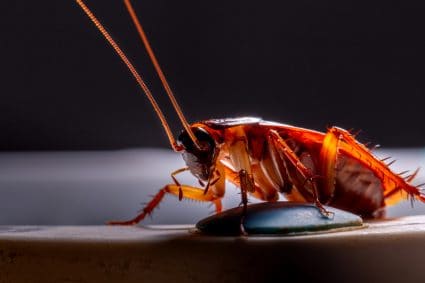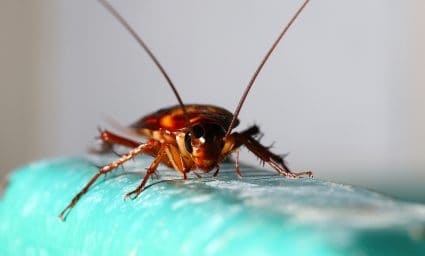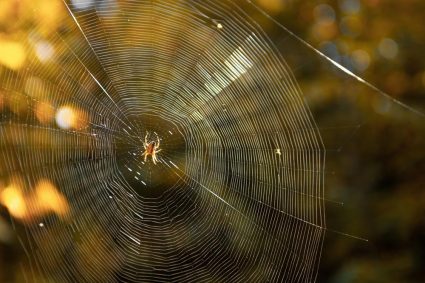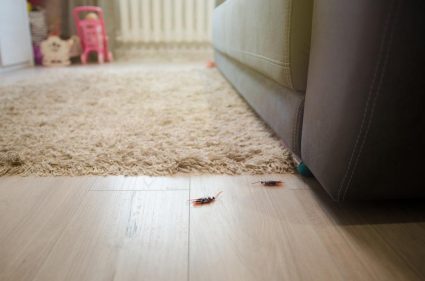
Dealing with a flea infestation can be a daunting task. These tiny, fast creatures are not only annoying but can also cause health problems for you and your pets. If you’ve tried DIY methods and they haven’t worked, you may need to call in the professionals. But how do pest control companies get rid of fleas? Let’s dive into the process.
Pest control companies get rid of fleas by initially identifying the infestation, then using a combination of methods such as insecticide application, sanitation, treating pets, exterior treatment, and regular vacuuming. The process usually takes several weeks due to fleas’ complex life cycle. After treatment, they take measures to prevent reinfestation and ensure their methods are safe for pets and children.
Initial Steps to Identify a Flea Infestation
Before starting any treatment, pest control professionals conduct a thorough inspection to confirm the presence of fleas. They look for signs such as pets scratching excessively, small black dots (flea dirt) on carpets or surfaces, and actual fleas jumping close to the ground.
They also perform the white sock test, wherein they walk around the house wearing white socks. As fleas are attracted to white, they jump onto the socks, making them easier to spot.
In addition, they inspect the yard, especially shaded areas where pets rest, for potential flea infestations. Once the presence of fleas is confirmed, they will develop a customized treatment plan.
Methods Used to Eliminate Fleas
Pest control professionals use a combination of methods to eliminate fleas. These include:
1. Insecticide Application
Professionals use products containing ingredients such as permethrin, imidacloprid, or dinotefuran, which are lethal to adult fleas. They also use insect growth regulators (IGRs) like methoprene or pyriproxyfen to halt the development of flea eggs and larvae.
2. Sanitation
Thorough cleaning and vacuuming of the entire house, especially high-traffic areas, carpets, floors, furniture, and pet bedding, help remove flea eggs, larvae, and adult fleas.
3. Treating Pets
It’s essential to treat pets with veterinarian-approved flea control products to prevent reinfestation. Products containing fipronil, permethrin, or amitraz can be used for flea control on dogs and cats.
4. Exterior Treatment
Pest control professionals may also treat shaded outdoor locations where pets rest to eliminate fleas in those areas.
5. Regular Vacuuming
Vacuuming floors, rugs, carpets, upholstered furniture, and crevices can help remove adult fleas, flea larvae, and flea eggs.
How Long Does the Flea Extermination Process Take?
The flea extermination process usually takes several weeks to completely eliminate fleas from your home. After the initial treatment, it is common to see adult fleas for up to three weeks. However, in some cases, it can take several months to get rid of them completely. This is because fleas have a complex life cycle, and at some stages, they are resistant to insecticides and other flea control products.
Preventing Fleas from Returning
Pest control companies take several measures to ensure fleas do not return after treatment. These include treating pets for fleas, regular vacuuming and cleaning, yard and carpet maintenance, insecticide application, regular pet grooming, flea prevention measures for pets, sealing gaps and maintaining a clean yard, regular home inspections, education and prevention tips, and follow-up treatments.
Are Pest Control Methods Safe for Pets and Children?
The safety of pest control methods for pets and children depends on the products and techniques used. Many pest control companies now use natural pest control measures and follow EPA safety standards to minimize the risk to pets and children. However, it is essential to take precautions to ensure the safety of your pets and children during and after pest control treatments.
Preparing for a Flea Treatment
Before the pest control professionals arrive, homeowners should take several steps to prepare their homes for the treatment. These include cleaning the kitchen, decluttering, cleaning, sealing openings, preparing the outside, informing neighbors, and securing pets.
Conclusion
Professional pest control methods are generally more effective and efficient than DIY solutions for flea infestations. They use a combination of effective strategies and products to ensure that all stages of flea development are eliminated, providing you with a long-term solution to your flea problem. So, if you’re dealing with a flea infestation, don’t hesitate to call in the professionals.
Frequently Asked Questions
What is the white sock test?
The white sock test is a simple method used to identify the presence of fleas in a home. Pest control professionals wear white socks and walk around the house. Fleas are attracted to white and will jump onto the socks, making them easier to spot.
What are the signs of a flea infestation?
Signs of flea infestation include pets scratching excessively, small black dots (flea dirt) on carpets or surfaces, and actual fleas jumping close to the ground. Pest control professionals also use the white sock test to confirm the presence of fleas.
What are insect growth regulators (IGRs)?
Insect Growth Regulators (IGRs) are chemicals used in pest control that mimic natural insect hormones and disrupt the growth and development of pests. In the case of fleas, IGRs are used to halt the development of flea eggs and larvae.
How long does it take to completely eliminate fleas from a home?
The flea extermination process usually takes several weeks to completely eliminate fleas from a home. However, in some cases, it can take several months to get rid of them completely due to their complex life cycle.
Are the insecticides used for flea extermination safe for pets and children?
Many pest control companies use natural pest control measures and follow EPA safety standards to minimize the risk to pets and children. However, precautions should be taken to ensure the safety of pets and children during and after pest control treatments.
How can I prepare my home for a flea treatment?
Before the pest control professionals arrive, homeowners should clean the kitchen, declutter, seal openings, prepare the outside, inform neighbors, and secure pets to prepare their homes for the treatment.












